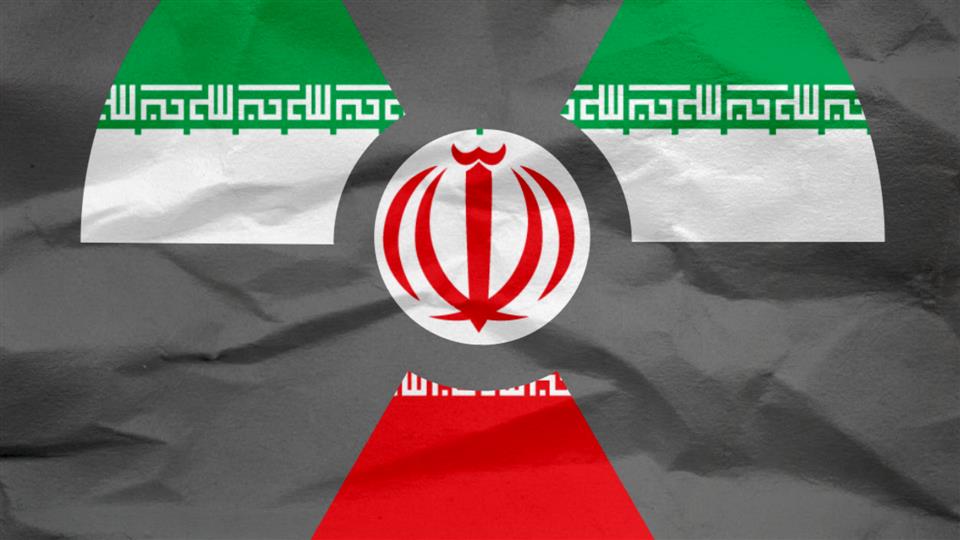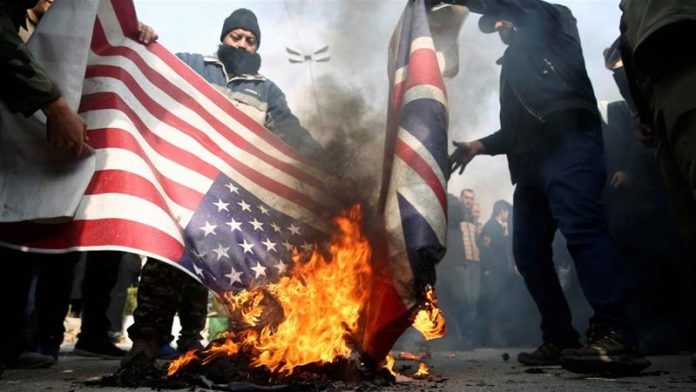I once had a history teacher who taught through role-playing. He would tell different students the situations they were in, and then go around asking them what they would do. This teacher would not tell the students what part of history he was teaching, or whose position he was putting them in, until later, but he would accurately describe the choices students had available to them, and would let the students decide what they would do.
More often than not, the students decided to repeat history, exactly as it actually unfolded.
We forget sometimes that world leaders have to choose from choices actually available to them, even when none of those choices are all that good, and I will invite you, once you have read this history, to close your eyes for a moment, and to ask yourself, in all seriousness, what choices you would make regarding the Middle East today.
But first – here is a brief history of the Middle East.
Prior to World War One, the Ottoman Empire ruled most of the Islamic world, and had done so for about 600 years. After World War One, the Ottoman Empire collapsed, leaving the Middle East as an ungoverned land mass, that also had the world’s largest known oil reserves, at the exact same time that oil was emerging as the most important commodity on Earth.
If we go back further in history, the Middle East is one of the most conquered areas on Earth, having been ruled by such empires as Sumer, Persia, Babylon, Rome, and Byzantine. Prior to World War One, much of the Middle East had never really seen nations so much as competing empires, that traded lands back and forth, until they fell into oblivion.
Islam split in two in 632 (shortly after Muhammad died). Most of Muhammad’s followers wanted to decide, democratically, who would succeed Muhammad (these became the Sunni), but a smaller group (about 15% of Islam – the Shiite) wanted Ali, who was married to Muhammad’s daughter Fatima, to lead them.
One of Muhammad’s commands was to kill any Islamic person who did not follow the religion ‘correctly,’ so once Islam split, there were suddenly competing ideas on what ‘correctly’ meant. Needless to say, these two groups have had an on-again, off-again war, ever since.
After WWI, France and England were tasked with deciding what to do with the remnants of the Ottoman Empire, and their decision was to carve it up, as best they could, into nations. The Ottoman Turks were given Turkey, and the rest of the former Ottoman Empire was carved up into nations. Saudi Arabia, Iran, and Iraq emerged as the dominant forces in the Middle East.
Unfortunately for the Middle East, there were various tribes, many of which were nomadic, making the task of giving each group it’s own homeland impossible. Each nation would need ample water, arable land, defensible borders, and various other things, much of which were in short supply in the Middle East. The French and English did the best they could, but the Kurds, as one example, got no homeland.
Today, Iran is the center of the Shiite world, and Saudi Arabia is the center of the Sunni world. Saddam Hussein was a Sunni leader of Iraq, but Iraq is actually majority-Shiite. Each nation in the Middle East has a history, but these three nations, by nature of being the dominate forces in the Middle East, are the most important to understand.
The Kingdom of Saudi Arabia was created in 1932, but the emergence of Al Saud (the House of Saud), as a political force, occurred in 1744, when Muhammad bin Saud joined forces with the religious leader, Muhammad ibn Abd al-Wahhab. The House of Saud became the political leadership of this alliance, and the teachings of al-Wahhab (what became known as ‘Wahhabism’) became the sect of Islam the House of Saud followed. Once the House of Saud created the Kingdom of Saudi Arabia, they began spreading Wahhabism throughout the Sunni world.
Whabbism is an extreme, fundamentalist form of Islam, that seeks to live out Muhammad’s teachings as perfectly as possible, and the House of Saud has spent billions spreading this extremism throughout the Sunni world.
Iran is at the center of what was once one of the largest and most powerful empires in antiquity (the Persian Empire), before being destroyed by Alexander the Great. The modern state of Iran had it’s start around the year 1500, when Ismail I created the Safavid Empire.
The Safavid Empire ended when Pashtun rebels killed Sultan Husayn, in 1722, and in 1729, Nader Shah drove the Pashtuns out, creating the Afsharid Dynasty. Nader Shah was assassinated (but make a note of his last name), and in 1779, after a brief civil war, the Zand Dynasty emerged, led by Agha Muhammed Kahn.
Kahn died in 1779, leading to another civil war, until the Quajar Dynasty emerged in 1795. The Quajar Dynasty stayed in power until WWI.
The Ottoman Turks invaded North-Western Iran in 1914, committing the Armenian Genocide of 1915-1917, and the Assyrian Genocide of 1914-1920. Britain occupied Western Iran during WWI, and stayed until 1921.
The British supported a military coup in 1921, and Reza Kahn became Prime Minister of Iran. Reza Kahn made himself king in 1925, and assumed the name Reza Shah, establishing the Pahlavi Dynasty.
Iran declared neutrality when WWII broke out, but it was invaded by the British and Russians, and became a major conduit for allied aid into Russia. Reza Shah was not supportive of the British and Russians, and was forced to abdicate his thrown. His son, Muhammad Reza Pahlavi was put in charge.
Stalin, Roosevelt, and Churchill agreed to make Iran a truly independent state after WWII, but the Soviets created two Soviet puppet-states in North-Western Iran instead. Iran overtook these puppet states in 1946.
In 1951, Muhammad Mosaddegh became Prime Minister. Mosaddegh was widely popular in Iran, but he nationalized the Iranian oil industry, and leaned heavily toward the Soviets. America and England helped Iranian General Fazlollah Zahedi mount a coup d’etat, overthrowing the democratically elected Mosaddegh, and restoring Muhammad Reza Pahlavi to power, as Shah.
Ruhollah Khomeni, a radical Islamic cleric, became inflamed by the American and British backed coup, and worked, from exile, on a radical Islamic revolution to overthrow the Shah, which succeeded in 1979. Ruhallah Khomeni created a theocracy with himself at the head, taking the title of Ayatollah Khomeni. Khomeni died in 1989, and Ali Kahmenei succeeded him as Ayatollah. Ayatollah Kahmenei is still in charge of Iran, today.
I’m not mentioning the Presidents of Iran, under the Ayatollahs, as though Iran does have a President, the Ayatollah has complete political control over Iran. The President is merely an elected adviser, with no power (save that delegated by the Ayatollah).
Modern Iraq did not emerge until the Ottoman Empire collapsed, following WWI. Iraq was initially three provinces, but the League of Nations almost immediately merged them together. Iraq wanted a fourth province that ultimately went to Syria.
Britain ruled Iraq as a British protectorate until 1932, when England allowed Iraq to become an independent kingdom.
The kingdom was overthrown by a coup d’etat, led by General Abd al-Karim Qasim, in 1958. In 1963, Colonel Abdul Salam Arif overthrew him, and his son was overthrown by the Ba’ath Party in 1968, under the rule of Ahmed Hassan al-Bakr. Control over the Ba’ath Party gradually flowed toward Saddam Hussein, and Hussein took over in 1979.
It is important to note that though the Ba’ath Party is Sunni, Iraq is a majority-Shiite nation.
Saddam Hussein invaded the Islamic Republic of Iran in 1980. Saddam Hussein was initially backed by America, and had a better equipped army than did Iran. Iran, however, had more people. Saddam Hussein used chemical weapons against Iran, and Iran had a practice of having children in rugs roll across Iraqi mine fields, in front of the Iranian Army. The children would detonate the mines – the rugs were to keep the children’s bodies intact for burial. This was a very bitter, bloody war, that did not end until 1988. During the war, Saddam Hussein used chemical weapons against it’s own Kurdish population, killing between 50,000 and 100,000 Iraqi Kurds.

Saddam Hussein also used chemical weapons against Iraq’s Shiite population, to put down uprisings, in 1991.
In 1990, Iraq invaded Kuwait. The United States massed troops in Saudi Arabia, to prepare to repel Hussein’s forces. The war was short, but the placement of American (non-Muslim) troops on Saudi land enraged Osama bin Laden (a Whabbi cleric, who had previously helped repel the Russians from Afghanistan). Osama bin Laden formed the terrorist group Al Quaida, with the dual aims of overthrowing the House of Saud (for allowing American troops on Saudi land), and of destroying the United States (for defiling Saudi land).
We all know what happened next. Al Quada attacked us on 9/11. The Taliban in Afghanistan was giving refuge to Al Quada, so we invaded. Saddam Hussein had a reputation for using chemical weapons (including against his own people), and promised $200,000 to the families of anyone who died in an act of Jihad that killed Americans. The threat of Jihad with chemical weapons convinced George W. Bush to invade Iraq as well.
We still have troops in both Iraq and Afghanistan, though today they are almost exclusively in advisory roles.
Under President Obama, Arab Spring took off across the Muslim world (sparked on by the CIA); and NATO defeated Muammar Gaddafi in Libya, with American air support, turning Libya into a failed state.
The CIA setup ISIS, with weapons smuggled through Benghazi, to destabilize Syria, which has been in a state of civil war ever since. ISIS then created a caliphate in parts of Syria and Iraq, which we helped destroy – primarily in Iraq (we had air strikes in Syria as well, but eventually left Syria to Russia and Turkey). Syria is still in a state of civil war, and since the start of Arab Spring, millions of Muslims have migrated into Europe, in what has become the largest mass migration in human history. Parts of Europe have destabilized as a result.
And, of course, Trump just had a drone kill the General of Iran’s Qud forces: Quassem Suleimani. The Quds are Iran’s militias, in other countries. Qud militias are active in such places as Iraq (where they fight against us), Syria, the West Bank and the Gaza Strip. According to Iran, they have hundreds of Qud forces in the United States waiting for orders to commit acts of terrorism against the American citizenry, and if I had to guess, I would venture that there are Qud forces throughout Europe. Suleimani was in charge of all of these forces, and was responsible for the deaths of hundreds of Americans.
We’ve known for at least the past 40 years that there would be no peace in the Middle East as long as Whabbasim runs the House of Saud, and as long as the Ayatollahs run Iran. We have also known for at least that long that Iran, Iraq, and Saudi Arabia all have designs to be regional, if not global, powers.
Our strategy (for too long) has been to keep a balance of power between Saudi Arabia, Iraq, and Iran, such that none of them can dominate the others. We’ve talked about peace in the Middle East, and we’ve pretended that the real conflict is that Israel exists. Israel does create hostility, given that it is a Jewish State, and that the only thing Muhammed hated more than Jews (particularly late in his life), were dogs. Because Muhammed was supposedly as close to perfect as a person can be, many Islamic people emulate Muhammed’s hatred for Jews, and his hatred for dogs (particularly black ones).
The real problem preventing peace in the Middle East is not Israel, but religious extremism in Iran and Saudi Arabia. Israel inflames this extremism.
The Crown Prince of Saudi Arabia rejects Whabbism. He wants to usher in a moderate Sunni world in which Islam is a choice people are free to make, and in which Islam strives to live side by side with other religions. He wants Sharia to be a personal code of conduct NOT enacted into law, and in which Jihad is a personal struggle to live by Sharia, and NOT the struggle to force Sharia upon the entire planet. The Saudi Crown Prince wants to turn Saudi Arabia into a moderate nation.
We have moderate leadership precariously holding power in Iraq as well.
But the Ayatollahs still run Iran.
I said I was going to ask you to roll-play, and I now invite the reader to close their eyes for a moment, and to ask themselves, given the history of the Middle East going right up to where we are today, what would you do? The remainder of this article is my answer to that question.
If there is ever to be peace in the Middle East, it will occur only when Saudi Arabia, Iran, and Iraq are all moderate countries, who are also allies of one another, and if Germany, France, and England can get along, there is hope for Saudi Arabia, Iran, and Iraq too.
But not as long as the Ayatollahs are in charge.
If the United States leaves the Middle East, Iran takes control of Iraq, and Iraq becomes a fundamentalist Shiite Islamic state, with a President reporting to the Ayatollah. This would shift the balance of power against Sunni Saudi Arabia, and cause a massive war. Iran has also pledged to wipe Israel off the face of the Earth, with the Ayatollah himself on record as saying that if he gets nuclear weapons, his only regret in nuking Israel will be that the world has Jews in other places. Iran is committed to doing what it can to kill every Jewish person on the face of the Earth.
We could conceivably get out of the Middle East, but doing so would make it possible for Iran to defeat Saudi Arabia, and to bring all of the Middle East under it’s dominance. That would spell the end of Israel, and would make Iran – under the Ayatollahs – a world power.
Leaving the Middle East risks having Iran recreate the Persian Empire. Knowing what we know about radical Islam, we cannot afford to let that happen, and particularly when deposing the Ayatollahs, and restoring Iran to moderate Islam, would create the first chance for true peace in the Middle East, since the fall of the Ottoman Empire.
The Ayatollah sometimes refers to nuclear weapons as ‘The Sword of Islam,’ which is a reference to Muhammad’s command to ‘spread Islam with the sword.’ If the Ayatollah gets nuclear weapons, he plans to use them.
Nothing could be more costly than an Ayatollah with control over nuclear weapons.
Neville Chamberlain gave Czechoslovakia to Hitler in 1938,and declared that he had created ‘peace for our time.’ The bloodiest war in human history broke out one year later.
Had Chamberlain listened to Winston Churchill, England (and France) would have invaded Germany as soon as Germany invaded Czechoslovakia, and the war would have been over in a week or two, creating true ‘peace in our time.’
I look at the Ayatollah, and the possibility of a nuclear Iran, and I see a situation eerily similar to 1938. The Democrats want to appease Iran, to create ‘peace in our time,’ but I think Churchill had it right – sometimes true peace can only come at the other end of a war.
If we are to fight Iran, we should do it while it is still relatively easy to win. I advocate hitting Qud forces in Iraq, the West Bank, and the Gaza Strip, as well as Iranian military targets throughout Iran. I would also destroy Iran’s command and control systems, to isolate their leadership from their military, and from their people, as much as possible, and I would sink their fleet of bass boats so that they cannot threaten the Straits of Hormuz.
I would build permanent bases in Iraq and Afghanistan, and commit to staying until such time as it is perfectly safe for our soldiers to be stationed there with their families (like in Germany today). We would stay until Iraq and Afghanistan are stable, friendly, moderate nations, and we would let them run their own affairs on the condition of continued friendship with the United States.
I would keep Iran on it’s knees until the Iranian people overthrow the Ayatollah, and then I would extend a warm hand of peace to the Iranian people. In the meantime, a defanged Iran would would no longer support the Qud militias currently wreaking havoc.
Many are going to say that my plan would cause blowback, but blowback is caused by the belief, among our enemies, that we lack resolve. The Middle East is where the real threat is today, so it makes far more sense to have our forward areas of deployment in places like Iraq and Afghanistan (and Poland), rather than in England, Italy, Germany, and Japan.
Germany and Japan are the test cases to follow. We built permanent bases, and worked with friendly governments (we mandated that they be friendly) to rebuild those countries. We stayed until the cultures changed, and though it was difficult at first, there was never any question that we were going to stay for however long it took. Today, Germany and Japan are places where our troops want to be stationed, and there is no reason why Iraq and Afghanistan can’t be like that one day in the future as well – as long as we have the resolve we had after WWII.
Will Russia and China get involved? They would certainly take notice, but neither of them is going to start a world war over Iran, and particularly not when they know that the Iranian leadership deserves it.























Hey Wally, can you explain why you are certain its a given that should we pull out, Iran automatically takes Iraq and Saudi Arabia? Appreciate the history of the mid east too, thanks!
Iran’s Qud forces are all over the region, and particularly in Iraq, Syria, the West Bank, and the Gaza Strip. Iraq is majority-Shiite, and the historic balance of power in the Middle East has been split between Iran, Iraq, and Saudi Arabia. Iran and Saudi Arabia, representing the centers of the Shiite and Sunni worlds (respectively), are mortal enemies.
If we pull out of Iraq, Iran has already positioned itself to run the country. If Iran and Iraq unite (with Iraq’s government reporting to the Ayatollah), then the combined power of Iran and Iraq will make it strong enough to overrun Saudi Arabia – maybe not immediately, but at some point in the future.